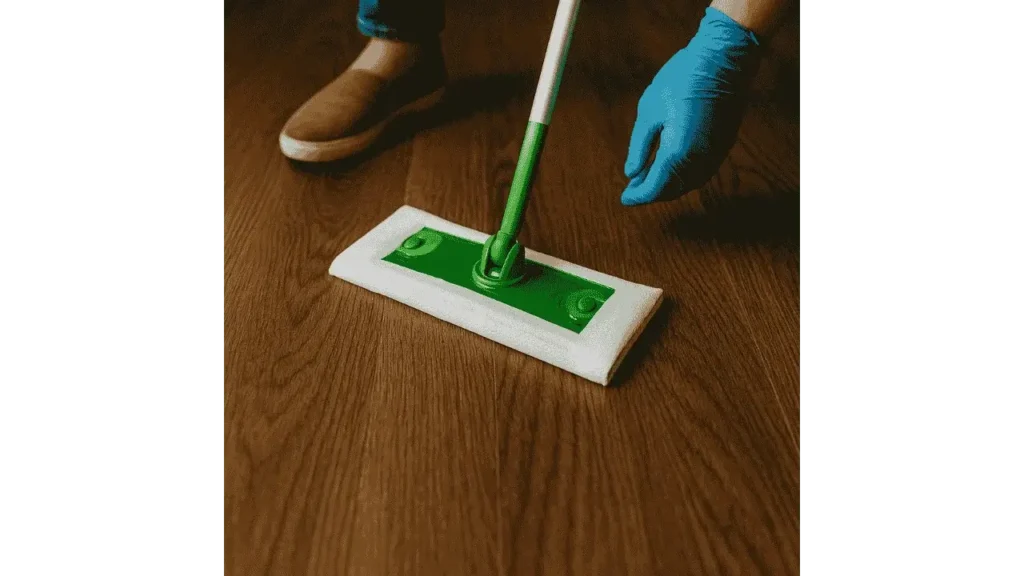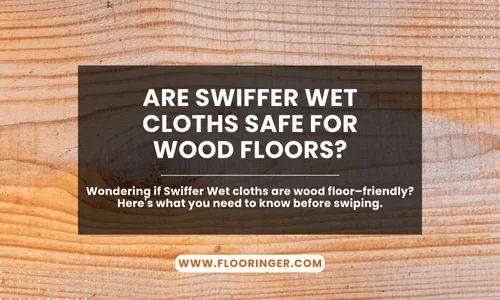Maintaining the beauty of wood floors requires using the right cleaning products to avoid damage. Many homeowners wonder whether Swiffer Wet cloths are safe to use on their hardwood floors. These cleaning tools are designed to be convenient and effective at removing dirt and grime, but understanding their compatibility with different wood floor types is crucial. Proper usage can prevent long-term damage and preserve the floor’s natural appeal.

Are Swiffer Wet Cloths Safe for Sealed Wood Floors?
Swiffer wet cloths are generally safe for use on sealed hardwood floors. These floors have a protective finish that shields the wood from moisture and allows for quick cleaning. The pre-moistened cloths effectively pick up dirt and debris without leaving excessive moisture behind. However, it is important to avoid oversaturation and ensure the floor dries quickly to prevent any damage.
Sealed wood floors benefit from the quick-drying nature of Swiffer Wet Cloths, making them an excellent option for light cleaning. However, frequent use of moisture-based cleaning solutions can wear down the protective finish over time, leading to dullness and potential vulnerability to moisture penetration.
Risks of Using Swiffer Wet Cloths on Unsealed Wood Floors:
Unsealed or improperly finished wood floors are more vulnerable to moisture, making Swiffer Wet Cloths a less suitable option. The moisture from the cloths can seep into the wood, causing swelling, warping, or discoloration over time. If your wood floor is unsealed, it’s best to stick to dry cleaning methods like sweeping or using a microfiber mop to avoid potential issues.
Unsealed wood is porous and lacks a protective barrier to repel water. Using wet cloths on such surfaces can result in trapped moisture, leading to mold growth and structural damage. If unsure about your floor’s finish, consult a flooring expert before using any wet cleaning products.
How to Use Swiffer Wet Cloths on Hardwood Floors Safely:
1: Check the Floor’s Finish
Before using Swiffer Wet Cloths, verify that your floor has a protective finish. Sealed floors can withstand light moisture, whereas unsealed floors are more prone to damage.
2: Avoid Excessive Moisture
When using Swiffer wet cloths, ensure they are not overly saturated. Excessive moisture can seep into seams and gaps, potentially damaging the floorboards.
3: Wipe Up Residue Immediately
After cleaning, check for any leftover moisture or streaks and wipe them away promptly to prevent residue buildup that could affect the finish.
Alternatives to Swiffer Wet Cloths for Wood Floors:
If you’re concerned about using Swiffer Wet Cloths, there are alternative methods to keep your wood floors clean. Dry microfiber mops are an excellent option for daily cleaning, as they effectively capture dust without the risk of moisture. For deeper cleaning, using a damp mop with a wood-safe cleaner specifically formulated for hardwood floors can provide thorough results without compromising the floor’s integrity.
Read More: How to Bolt a Safe to the Floor?
Using natural cleaning solutions, such as diluted vinegar or pH-neutral cleaners, can also offer an effective and safe alternative for maintaining wood floors without risking moisture damage.
Conclusion:
Swiffer Wet cloths can be a convenient and safe cleaning solution for sealed wood floors when used correctly. However, they should be avoided on unsealed wood surfaces to prevent potential damage from moisture exposure. Regular maintenance with appropriate cleaning tools will help keep your hardwood floors looking their best for years to come. Always check the manufacturer’s recommendations and follow proper cleaning techniques to ensure the longevity and beauty of your flooring.
